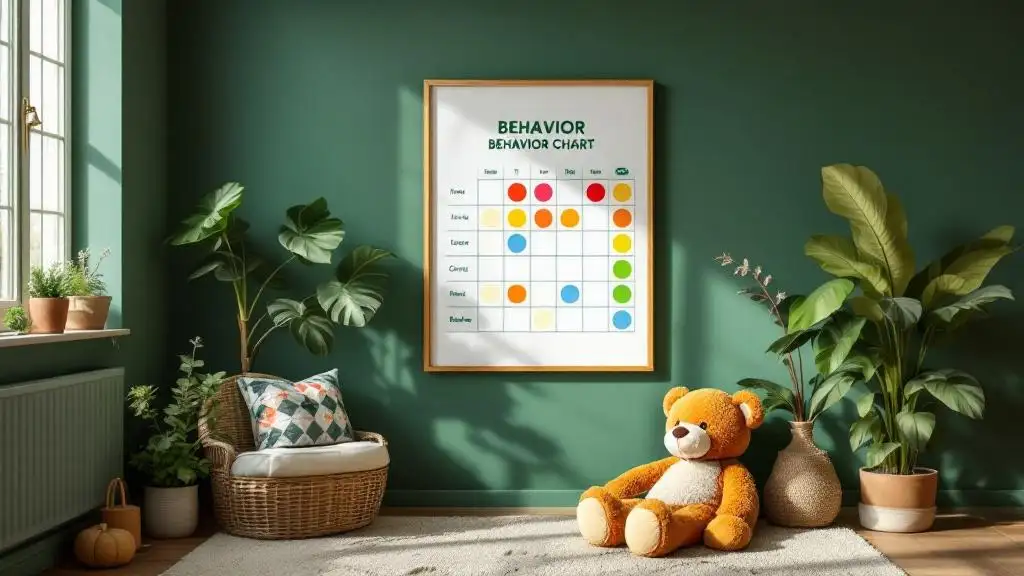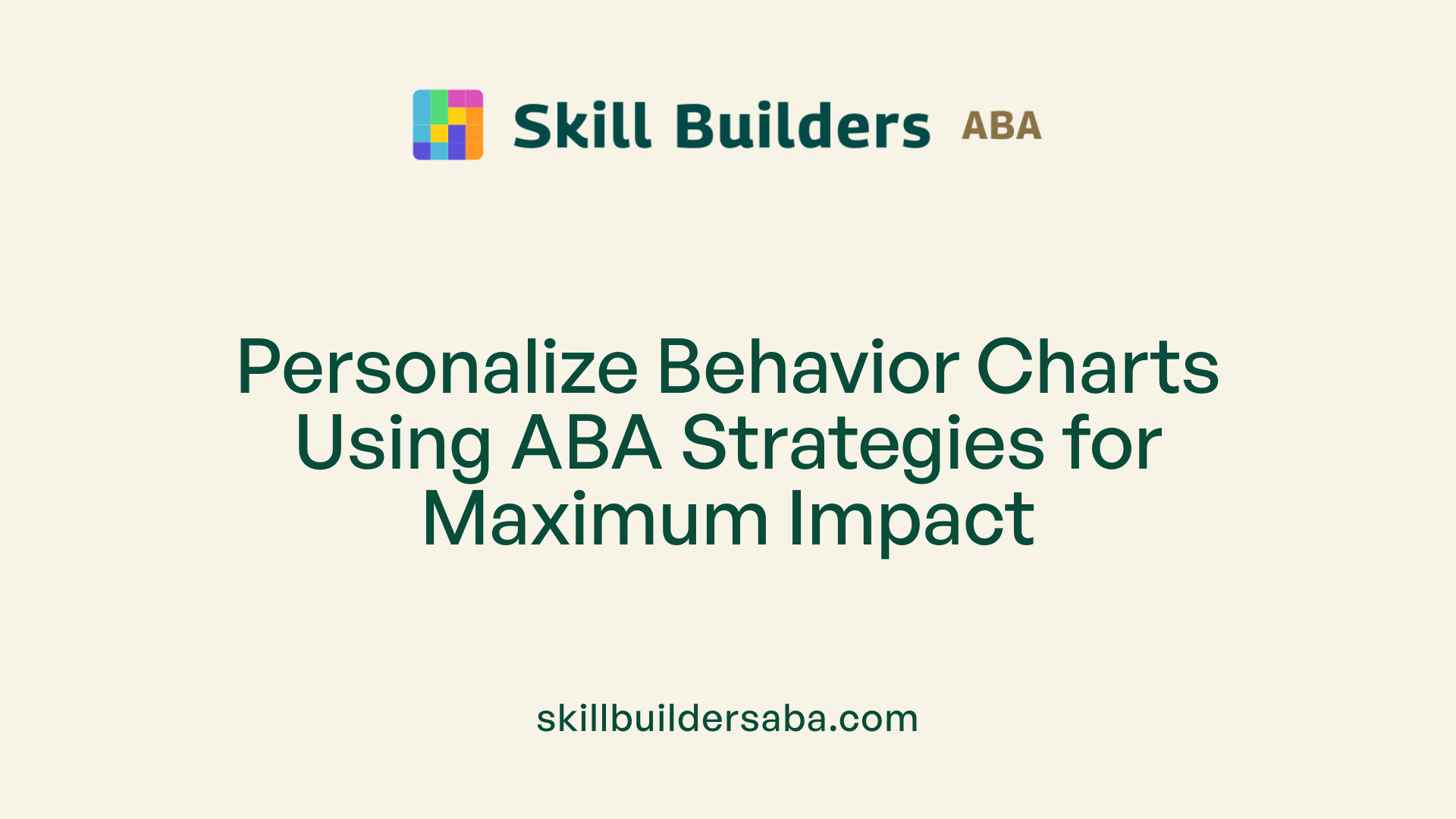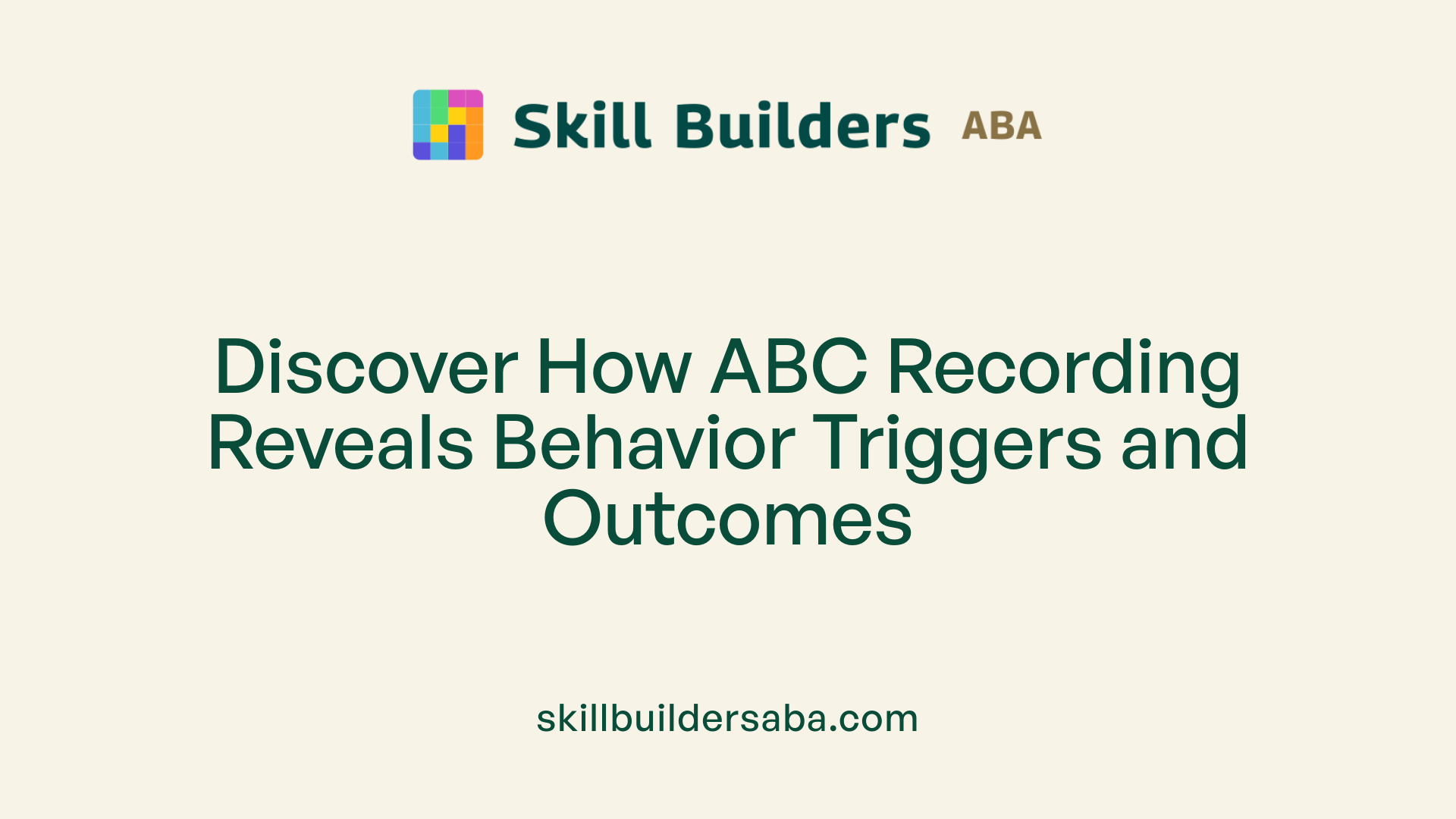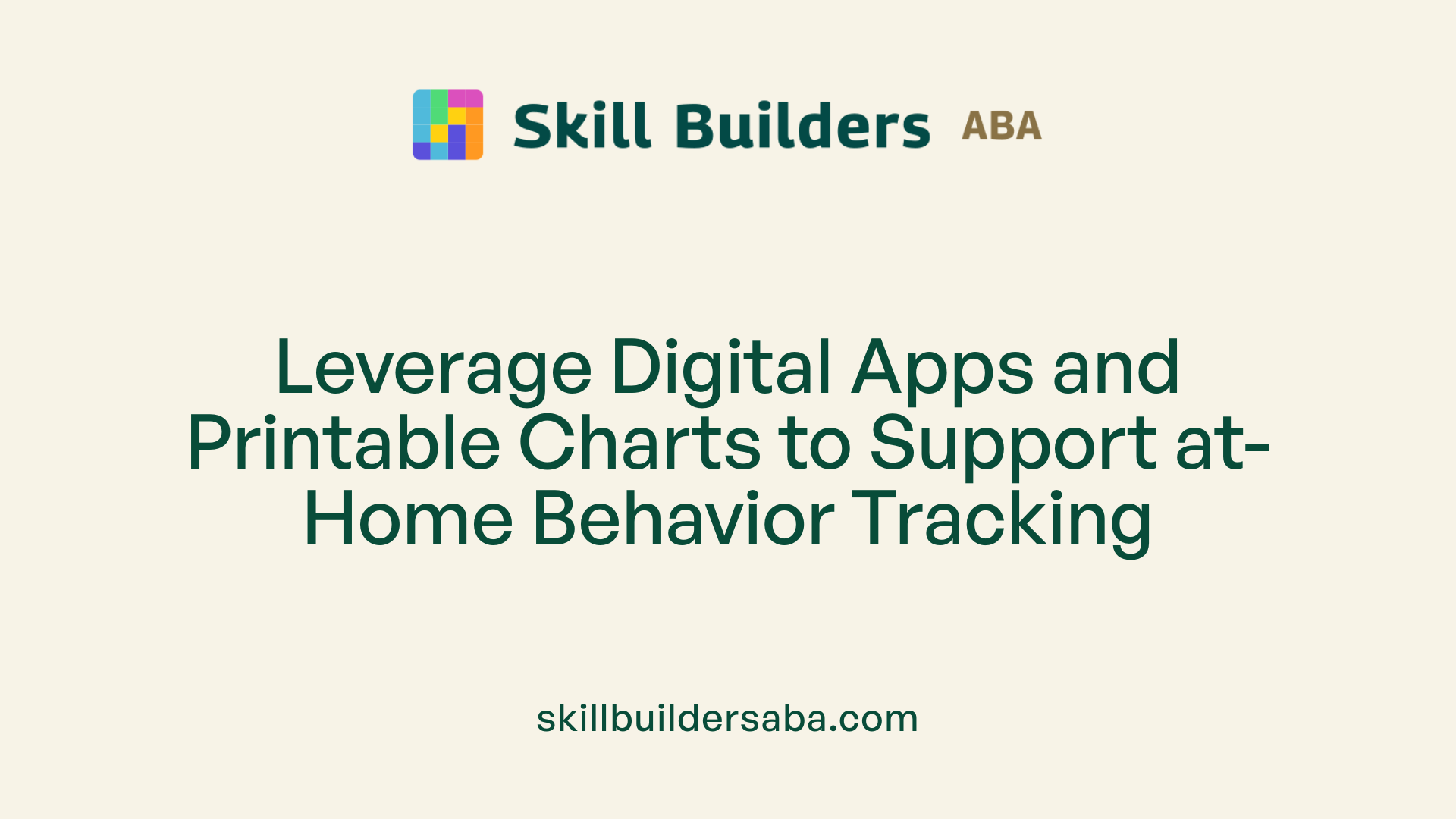
Creating a home behavior chart that works
Mastering Positive Reinforcement: How to Build an Effective Behavior Chart at Home
Setting the Stage for Successful Behavior Change at Home
Creating a behavior chart at home can be a pivotal tool for parents and caregivers aiming to support children, especially those with autism or other behavioral challenges. By tracking behaviors and rewarding positive actions, these charts help clarify expectations and shape desired habits. This article explores how to design a home behavior chart that truly works, grounded in the principles of Applied Behavior Analysis (ABA) and tailored strategies for meaningful, lasting change.
Understanding ABA Therapy and Its Role in Behavior Charts

What is Applied Behavior Analysis (ABA) therapy?
Applied Behavior Analysis (ABA) therapy is a well-established, individualized approach aimed at improving helpful behaviors and reducing challenging ones, particularly for individuals with autism and developmental disorders. Rooted in behavioral psychology principles, ABA uses techniques such as positive reinforcement, prompting, and careful data collection to teach skills like communication, social interaction, and self-care. These skills are often broken into small, manageable steps, delivered through structured programs like Discrete Trial Training (DTT) or play-based methods like the Early Start Denver Model (ESDM).
How does ABA inform behavior tracking and modification?
ABA therapy relies heavily on systematic observation and data collection to understand behaviors in context. Tools like the ABC (Antecedents, Behaviors, Consequences) recording method are foundational in this process, helping identify triggers and reinforcers behind behaviors. This insight guides the development of targeted behavior management strategies. Behavior charts, which track specific, measurable behaviors alongside tailored rewards, are commonly used within ABA to clarify expectations and use positive reinforcement effectively. They help structure interventions by setting clear goals and reinforcing progress.
What is the role of professionals in supporting ABA-based interventions?
ABA therapy is delivered by trained professionals such as Board Certified Behavior Analysts (BCBAs), Assistant Behavior Analysts (BCaBAs), and Registered Behavior Technicians (RBTs). BCBAs lead assessment and treatment planning, overseeing the intervention process, while BCaBAs and RBTs assist in implementation under supervision. These experts ensure that behavior charts and other ABA tools are tailored to an individual's unique needs, making adjustments based on ongoing data monitoring. Their specialized knowledge is crucial for creating effective, evidence-based behavior change programs.
The Science Behind Behavior Analysis: Principles That Guide Effective Charts

What are the key principles behind behavior analysis in autism therapy?
Behavior analysis in autism therapy is rooted in the scientific study of how behaviors are learned and maintained. The approach focuses on how environmental factors — specifically antecedents and consequences — shape behavior. At the heart of this is reinforcement, which strengthens desired behaviors by providing positive outcomes following those behaviors.
Applied Behavior Analysis (ABA) uses techniques such as prompting, shaping, and fading to teach new skills effectively. These methods are structured around understanding the function of behaviors, achieved through a detailed process called functional analysis.
Understanding antecedents, behaviors, and consequences (ABC)
The ABC model breaks down behavior into three parts: antecedents (what happens before), behaviors (the actions themselves), and consequences (what happens after). This framework helps identify triggers for behaviors and the outcomes that reward or discourage them.
By systematically recording ABC data, caregivers and therapists can detect patterns and identify why a behavior occurs. This insight is critical for developing targeted interventions that replace challenging behaviors with more functional ones.
Function categories of behaviors to target interventions
Behaviors typically serve one of four primary functions:
- Sensory: The behavior provides internal stimulation or relief.
- Escape: The behavior helps avoid an unpleasant situation.
- Attention: The behavior gains social interaction or notice.
- Tangible: The behavior acquires a desired object or activity.
Recognizing these categories helps guide which interventions will be most effective. For instance, teaching alternative ways to gain attention or escape demands can reduce challenging behaviors by fulfilling the same function more appropriately.
Overall, behavior analysis principles enable precise and individualized strategies. Using tools like ABC charts and reinforcements facilitates consistent progress monitoring and supports meaningful behavior change for children with autism.
| Principle | Description | Practical Application |
|---|---|---|
| Reinforcement | Strengthens desired behaviors through positive outcomes | Use rewards and praise to increase good behaviors |
| Functional Analysis | Identifies the purpose behind behaviors (escape, attention, etc.) | Guides tailored interventions based on behavior function |
| Antecedent-Behavior-Consequence (ABC) Model | Breaks down behavior to understand triggers and consequences | Records context to detect patterns and adjust strategies |
| Structured Teaching Techniques | Uses prompting, shaping, fading to develop skills | Guides skill acquisition step-by-step |
Why Use the ABC Recording Method for Behavior Insights?

What is the ABC Recording Method?
The ABC recording method stands for Antecedents, Behaviours, and Consequences. It serves as a structured tool to observe and document what happens before a behaviour, the behaviour itself, and the events that follow. This approach helps in gaining a clearer understanding of why a child behaves in a certain way, especially useful for children with autism and other behavioural challenges.
Historical Development and Role in Behaviour Pattern Recognition
Developed in the 1960s by Sidney Bijou, the ABC chart emerged from the foundations of behavioural psychology, notably the principles of operant conditioning. This method brought a systematic way to record and analyze behaviours, facilitating the recognition of patterns and functions. It laid groundwork for applied behaviour analysis (ABA), which is widely employed today in varied settings including classrooms and therapeutic environments.
How ABC Analysis Supports Strategy Development
By clearly identifying triggers (antecedents) and outcomes (consequences), ABC analysis reveals the function behind behaviours, such as whether they serve to gain attention, escape a task, obtain a tangible item, or fulfill sensory needs. Understanding these functions is crucial for crafting targeted behaviour management strategies. This insight supports caregivers, educators, and therapists in developing tailored interventions that address the root causes rather than just the symptoms, enhancing effectiveness and fostering positive behavioural change.
Designing a Home Behavior Chart: Best Practices for Success

Choosing Specific, Measurable Behavior Goals
Effective behavior charts start with clearly defined behaviors that can be easily observed and measured. Instead of broad targets like "be good," focus on specific tasks such as "completing homework" or "using polite words." This clarity ensures both the child and caregiver know exactly what is expected.
Focusing on Few Behaviors at a Time
Concentrating on a small number of behaviors—ideally one to three—helps maintain the child's focus and prevents overwhelm. This targeted approach also allows for consistent monitoring and better chances of success.
Involving the Child in Goal-Setting
When children participate in choosing their own goals, they feel a sense of ownership and motivation. Discussing desired behaviors together fosters commitment and can reveal what incentives will be most meaningful.
Using Clear, Consistent Tracking and Positive Reinforcement
Consistency is crucial. Tracking progress visually with charts paired with verbal praise reinforces positive actions. Positive reinforcement encourages repeat behaviors by rewarding success rather than focusing on failures.
Selecting Age-Appropriate Rewards
Tailoring rewards to the child’s age is important. Younger children may respond well to tangible rewards like stickers or extra playtime, while teens might prefer privileges such as extended screen time or relaxed curfews. Selecting motivating incentives helps maintain engagement and progress.
Tools and Resources to Enhance Behavior Tracking at Home

Digital Apps Supporting Behavior Tracking and Analysis
Several digital apps are designed to support behavior tracking and reinforcement, making it easier for parents and caregivers to maintain consistency and detailed records. Popular options include iRewardChart, Behavior Counter, and BehaviorSnap. These tools offer features such as customizable behavior tracking, reward systems, and data analysis to help identify patterns and progress.
Printable Charts from Reputable Organizations
For those who prefer physical resources, the nonprofit Association for Comprehensive NeuroTherapy provides hundreds of free printable behavior charts specifically designed for children with autism. These charts focus on encouraging positive behavioral change and can be tailored to target individual goals like eye contact, potty training, or completing homework.
Integrating Charts with ABA Professional Guidance
When using behavior charts, it is beneficial to combine them with professional guidance from Applied Behavioral Analysis (ABA) specialists. ABA professionals can help develop tailored plans for using incentive charts effectively, addressing difficult situations with strategic positive reinforcement. This integration ensures that behavior tracking is both structured and supportive of the child's unique needs.
Tailoring Behavior Charts to Individual Needs and Settings
How are behavior charts adapted for children with autism and special needs?
Behavior charts for children with autism and other special needs are often tailored to address specific challenges such as communication difficulties or sensory sensitivities. Since these children may have unique behavioral triggers and reinforcements, charts incorporate individualized goals that reflect their personal developmental needs, like making eye contact or completing self-care tasks.
What developmental goals can behavior charts support?
Behavior charts frequently focus on promoting essential skills such as communication, social interaction, and self-care. These developmental goals align closely with strategies used in Applied Behavior Analysis (ABA) therapy, which teaches these skills through structured, personalized reinforcement plans. For example, a chart may encourage a child to practice requesting help or completing a daily hygiene routine.
How are behavior charts used in different environments like foster care and schools?
In foster care, charts help create a shared language around expectations and rewards, supporting emotional healing and behavioral structure. In educational settings, they track behaviors and provide insights through ABC (Antecedents, Behaviors, Consequences) analysis, enabling teachers to identify triggers and reinforce positive actions effectively in children with special educational needs or autism.
Why is flexibility important when using behavior charts?
Children's behaviors and progress can change over time, so behavior charts must be flexible. This means adjusting goals, modifying rewards, and recalibrating expectations as needed. Involving children in this process fosters motivation and helps maintain relevance, ensuring the intervention remains supportive rather than punitive.
ABA therapy supports this individualized approach by analyzing behavior patterns and tailoring interventions accordingly. It emphasizes positive reinforcement and generalization of skills across settings, enhancing overall quality of life for individuals with autism. Behavior charts are practical tools that fit within this framework, helping personalize and visualize progress toward meaningful developmental goals.
Bringing It All Together for Effective Home Behavior Charts
Home behavior charts grounded in ABA principles and informed by tools like the ABC recording method offer a proven framework to support children’s behavioral growth, especially for those with autism or other special needs. By setting clear, manageable goals, involving the child, and combining consistent tracking with motivating rewards tailored to developmental levels, caregivers can create a system that encourages positive behaviors and improves quality of life. Leveraging digital resources and professional insights can further enhance effectiveness. Ultimately, the key lies in flexibility, patience, and celebrating progress, no matter how small — building a foundation for meaningful, lasting behavioral change at home.
References
- ABC Chart for Challenging Behaviour | Free Template
- Tips for Behavior Charts That Actually Work
- Free Expert Incentive Charts Can Boost Behavioral Change
- ABA Therapy Los Angeles | Autism ...
- Applied Behavioral Analysis (ABA) - Los Angeles
- Who can provide ABA therapy?
- Applied Behavior Analysis (ABA)
- The Top 10 Reasons Children With Autism Deserve ABA
Reach Out Today
Learn more about how we can support your child’s growth and development. Contact us to discuss our services and availability in your area.
.svg)